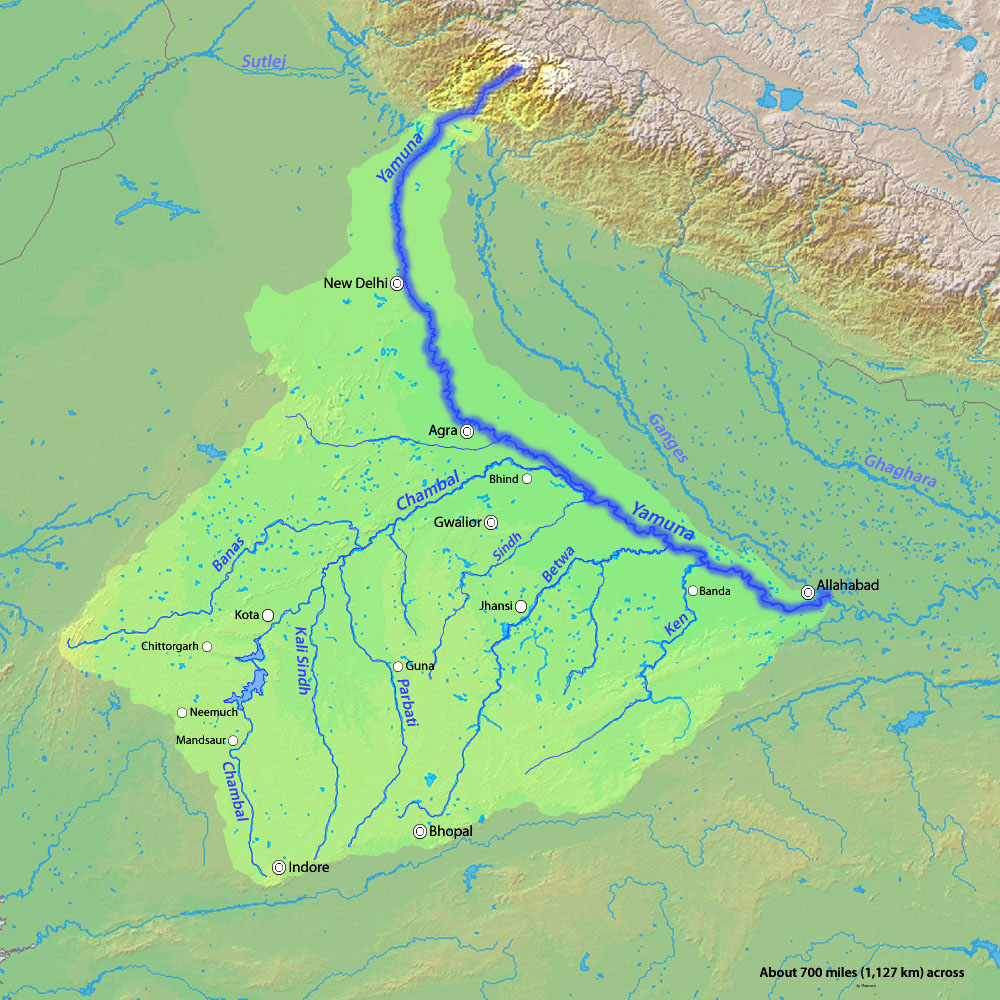Biodiversity & Environment
Supreme Court’s View on Pollution in Yamuna
- 15 Jan 2021
- 4 min read
Why in News
Recently, the Supreme Court (SC) has taken suo motu cognizance of pollution of water bodies by untreated sewage.
- The SC was hearing an urgent petition filed by the Delhi Jal Board (DJB), to immediately stop Haryana from discharging pollutants into the Yamuna river.
Key Points
- Background:
- In the 2017 Paryavaran Suraksha Samiti v. Union of India case, the SC directed that norms for generating funds, for setting up and/or operating the Common Effluent Treatment Plant and Sewage Treatment Plants, shall be finalised by the State Pollution Control Board’s on or before 31st march 2017.
- It was directed that for the purpose of setting up these plants, the state government will prioritise such cities, towns and villages, which discharge industrial pollutants and sewer directly in rivers and water bodies.
- SC’s Ruling:
- Constitutional Provisions Highlighted:
- Article 243W of the Constitution vests municipalities and local authorities with the performance of functions and implementation of schemes as may be entrusted to them, including those in relation to the matters listed in item 6 of the 12th schedule.
- Item 6 of the Schedule includes “public health, sanitation conservancy and solid waste management”.
- Article 21: The right to clean the environment, and further, pollution-free water, has been protected under the broad rubric of the right to life.
- Article 243W of the Constitution vests municipalities and local authorities with the performance of functions and implementation of schemes as may be entrusted to them, including those in relation to the matters listed in item 6 of the 12th schedule.
- Directions to Central Pollution Control Board (CPCB):
- The court directed the CPCB to submit a report identifying municipalities along the river Yamuna, which have not installed total treatment plants for sewage as per the requirement or have gaps in ensuring that the sewage is not discharged untreated into the river.
- It asked CPCB to highlight any other source of prominent contamination within the limits of Municipalities and to submit priority-wise list of Municipalities, river stretches adjacent to which have been found to be most polluted.
- Constitutional Provisions Highlighted:
Pollution in Yamuna
- Causes of Pollution in Yamuna:
- Industrial Pollution:
- The Yamuna flows into Delhi from Haryana and the state has industrial units in Sonipat (on the banks of Yamuna). Ammonia is used as an industrial chemical in the production of fertilisers, plastics and dyes.
- Mixing of Drains:
- Mixing of two drains carrying drinking water and sewage or industrial waste, or both, in Sonipat. The two drains often mix due to overflow or damage to the wall that separates them.
- Industrial Pollution:
- Effects of Rising Ammonia:
- Ammonia reduces the amount of oxygen in water as it is transformed to oxidised forms of nitrogen. Hence, it also increases Biochemical Oxygen Demand (BOD).
- Water pollution by organic wastes is measured in terms of BOD.
- If the concentration of ammonia in water is above 1 ppm, it is toxic to fishes.
- In humans, long term ingestion of water having ammonia levels of 1 ppm or above may cause damage to internal organs.
- Ammonia reduces the amount of oxygen in water as it is transformed to oxidised forms of nitrogen. Hence, it also increases Biochemical Oxygen Demand (BOD).
Yamuna
- Source: The river Yamuna, a major tributary of river Ganges, originates from the Yamunotri glacier near Bandarpoonch peaks in the Mussoorie range of the lower Himalayas in Uttarkashi district of Uttarakhand.
- Basin: It meets the Ganges at the Sangam in Prayagraj, Uttar Pradesh after flowing through Uttarakhand, Himachal Pradesh, Haryana and Delhi.
- Length: 1376 km.
- Important Dam: Lakhwar-Vyasi Dam (Uttarakhand), Tajewala Barrage Dam (Haryana) etc.
- Important Tributaries: Chambal, Sindh, Betwa, Ken, Tons, Hindon.







